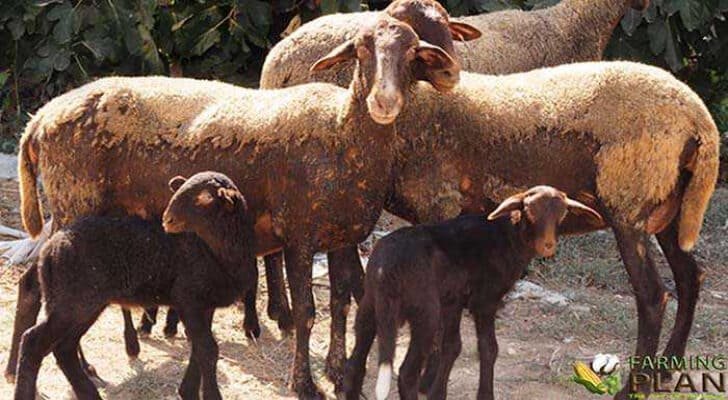The Guirra sheep is a breed that comes from the city of Valencia in Spain. This breed is domesticated, is raised mainly by the production of its meat. It is known as “Red Levantina”, due to the color of the skin and to the location in the Spanish Levante.
They descend from the African race Bení Ahsen, which originates in the Coast of Morocco, and arrived in Spain by the commercial relations that are maintained between the coast of Morocco and the Coast of Valencia, and arrived at that city 300 or 400 years ago behind.

Characteristics of Guirra Sheep
The Guirra Sheep is a very resistant breed. This breed can be exposed to high temperatures as well as to drought. The water consumption of this breed is low when it is summer season, and comes to withstand long walks, they can be grazed daily. Their physical resistance makes this breed able to cope with some common diseases.
It attacks sheep and has the ability to adapt easily to certain environments. It is a medium-sized breed. The females weigh between 45 to 60 kg, while the weight of males is between 70 and 90 kg. These sheep have a calm and calm character, they do not have characteristics to be reproduced at the industrial level.
The ears measure between 10 to 12cm but do not have the inclination, these are held horizontally. The color of the coat of this race is reddish-brown, as they grow they change the heat, it becomes clear and becomes reddish, and cream-colored. The male of this species produces between 4 and 5kg of wool.
The females produce between 2 and 3kg. Although the color of their skin is dark, sometimes it is red-pigmented. It has facial wrinkles Which appear with age. The wool that produces this breed is thick, covers the whole body excluding the face and legs, does not grow as much in comparison to other breeds, and it is considered that the wool that it produces is greasy.
Neither the male nor the female of the guirra breed has horns. Herds usually consist of groups of 200 or more sheep, while the smaller herds are made up of 50 sheep. This breed is very fertile and highly reproductive. 62% of births are individual, 35% double and 3% become triple births. The interval between deliveries is 6 to 7 months.
Usage
The Guirra sheep is a breed used for the production of meat. Lambs are slaughtered between 3 and 4 months of age as they weigh between 25 and 30 kg. Its wool is not very commercialized since it does not grow a good size in comparison with one of the other races and has the disadvantage that being of brown color is not a color that is desired, although fineness wool fiber, to have high Waste is not profitable its production.
Its milk is not marketed as it was tried to make cheeses with it, and the cheese did not set. However, the lactation period is 3 months and can produce 0.9 liters per day.
Food
The Guirra sheep are raised in very difficult areas, where the periods of rain are very short, and makes the vegetation poor, so the plants in the area are low digestibility and low nutritional value.
This breed feeds on different leaves of trees, small shrubs, grasses, pines, as well as natural grasses, certain grasses, legumes, vines leaves, almond husk, olive branches and some citrus, these sheep draw food even from the Poorer pastures. Some farmers use dietary supplements to their diet, including alfalfa and straw.
Special Feature
The Guirra sheep females have a strong maternal instinct. 10 years ago a statistic was made and it was verified that there were only about 3.000 individuals of this species. Today it is estimated that there are no more than 3.500, which is why according to an Official Cattle Breed Catalog of Spain it is considered a Race that must be protected and enters into species in danger of extinction.
They can decide what to eat and whatnot. They live between 13 to 14yr, although commonly the sheep of this race of 10yr of age are found.
Sheep Profile
| Sheep name | Guirra Sheep |
| Other Name | Sudat |
| Sheep Purpose | Meat |
| Coat color | Brown and reddish |
| Weight | 45 to 90 Kg |
| Climate Tolerance | All climates |
| Country of Origin | Spain |
Conclusion
We hope that this guide has helped you to understand the history of Gulf Coast Native Sheep, and their trendiness today. If you are interested in owning one for yourself, be sure to check out your local breeder before they become extinct!
As A Reference: Wikipedia


